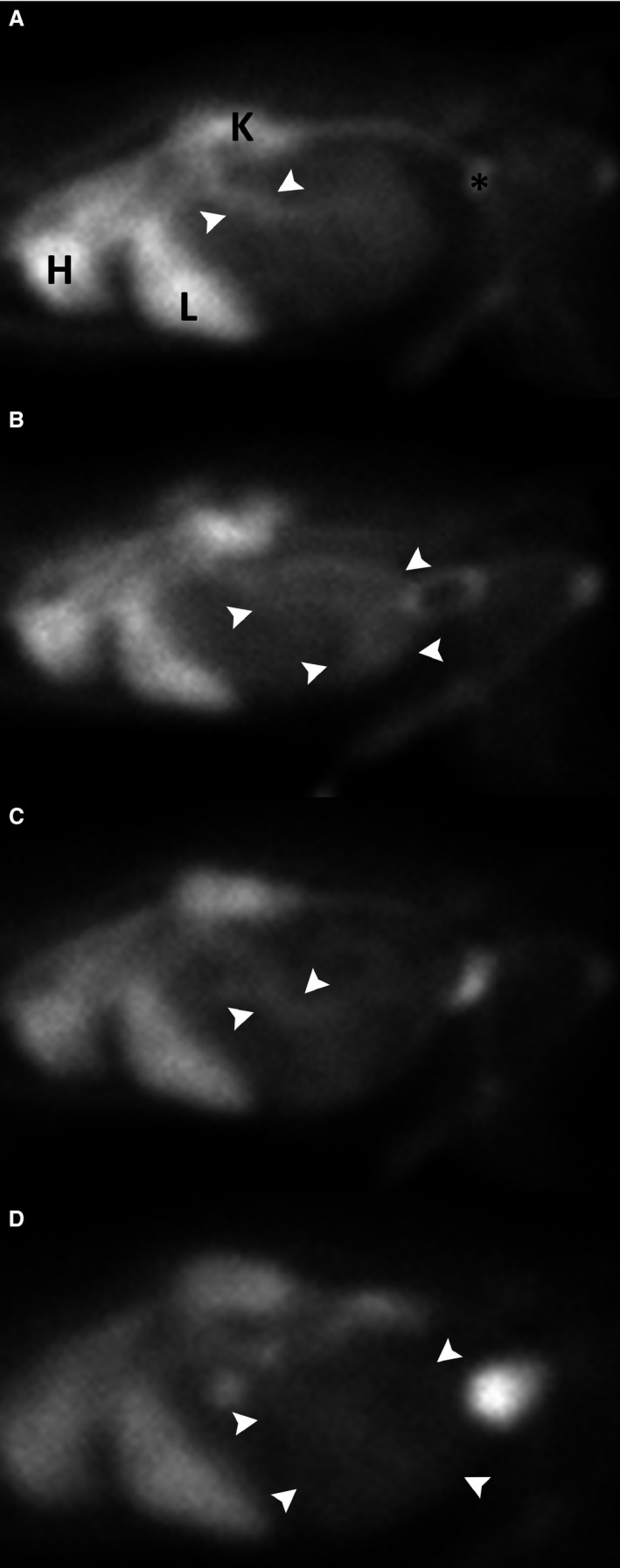Figure 2.

Right lateral static scintigrams of a dog (Papillon, male, 11 years old) with diffuse small intestinal radiopharmaceutical exudation 10 minutes (A), 1 hour (B), 2 hours (C), and 4 hours (D) after intravenous injection of 99mTc‐HSA. Radiopharmaceutical activity is noted within the heart (H) and major blood vessels, kidneys (K), liver (L), and spleen. The level of intestinal activity (white arrowheads) is increased relative to the heart, liver, and kidneys. Views a and c suggest focally increased radiopharmaceutical exudation, whereas on views b and d radiopharmaceutical loss is evident throughout the intestinal tract which underlines the importance of subsequent monitoring of radiopharmaceutical activity over time in order to differentiate between focal and diffuse losses, equivalent to surgical versus nonsurgical candidates. Note the variable size and position of the activity void caudal to the liver compatible with the stomach. HSA, human serum albumin.
